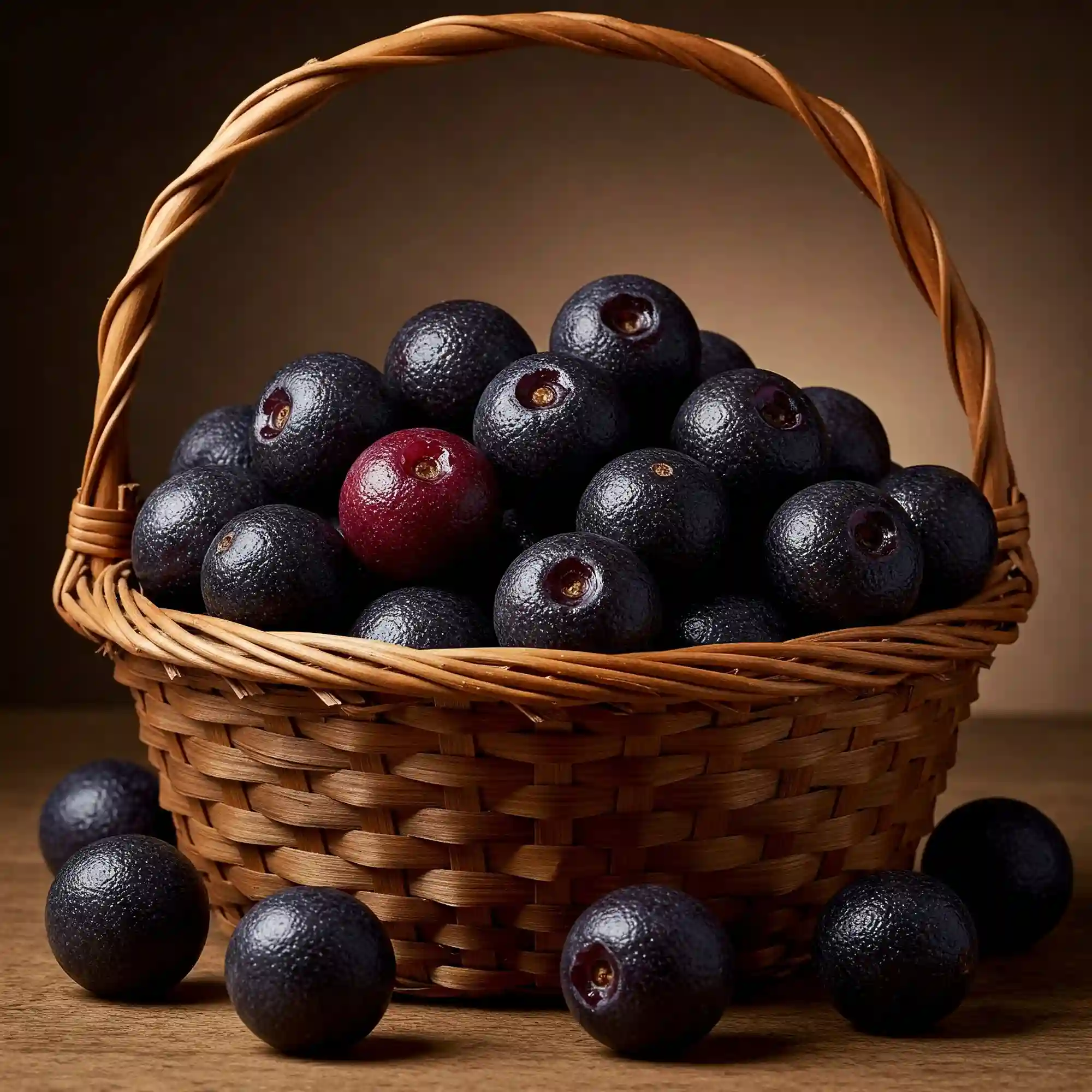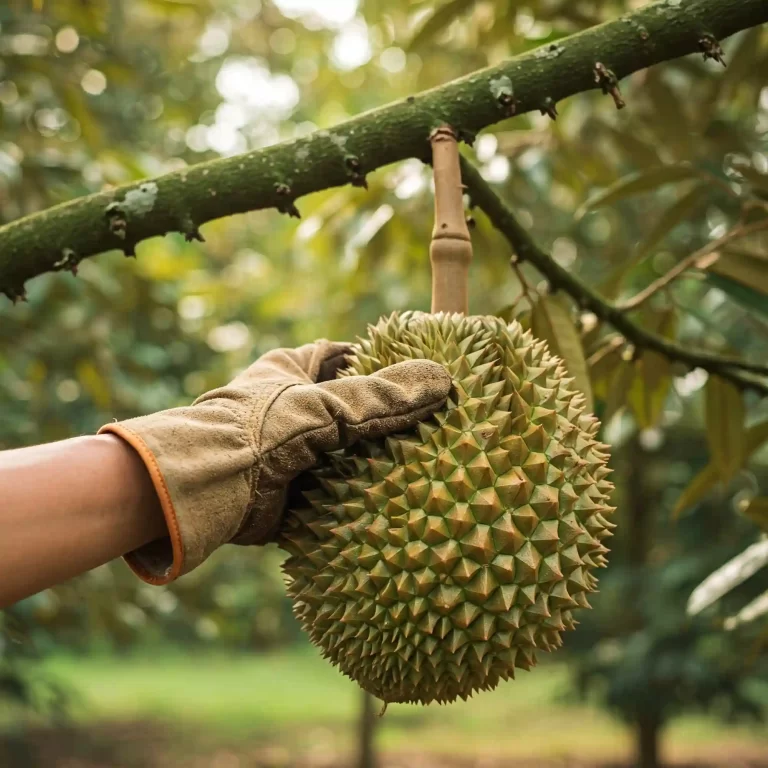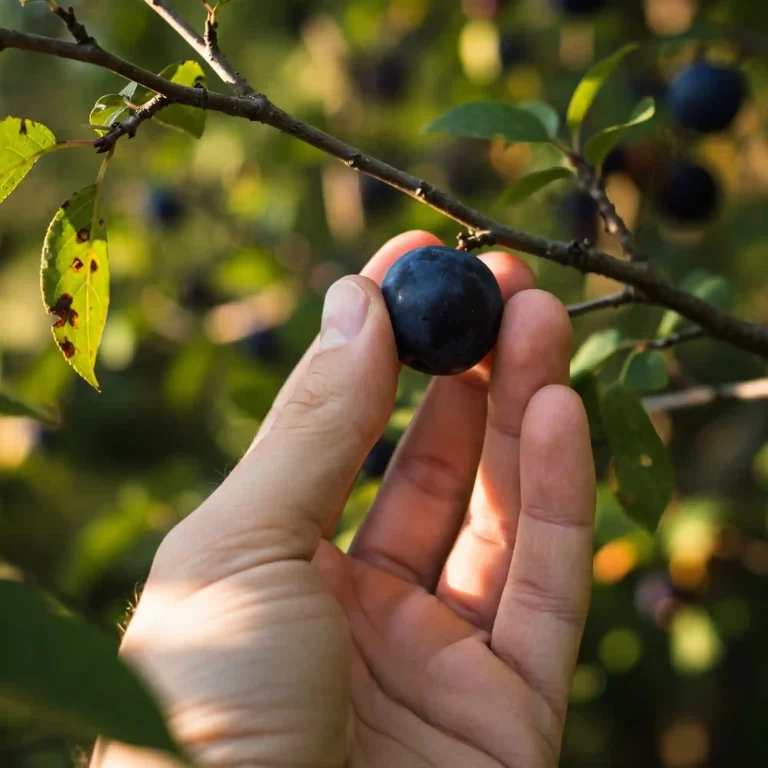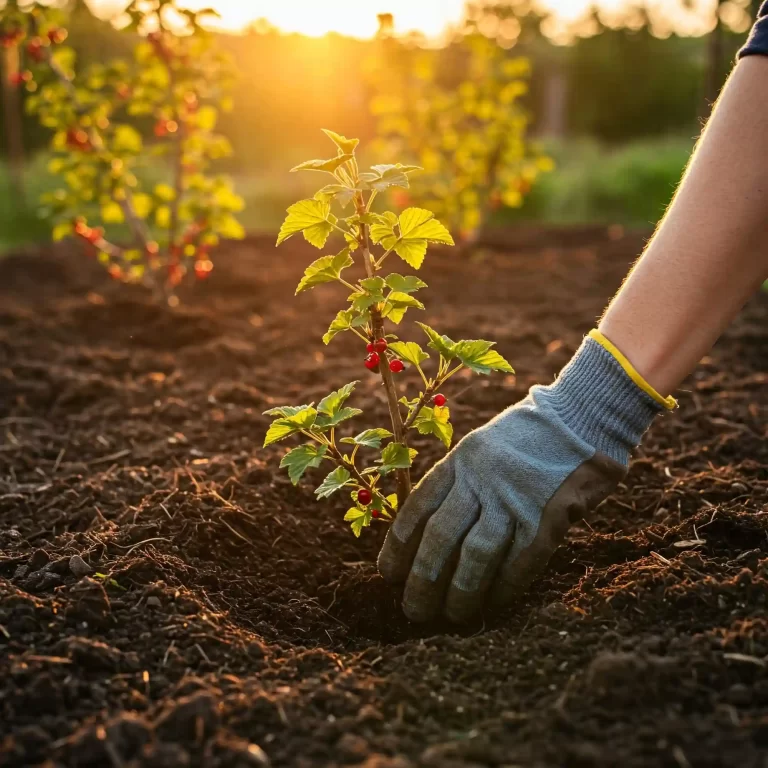Ever find yourself staring at a picture of those intriguing purple pods, wondering, “Could I really grow that?” You’re not alone. The allure of Akebi, with its unique sweet pulp and vibrant skin, is undeniable. But the thought of growing an exotic vine can feel daunting, right? I understand that feeling of uncertainty. I’ve been there, too, staring at a seed packet, wondering if I could really pull it off. You want to add something special to your garden, something that sparks conversation and offers a taste of the extraordinary. I’m here to tell you, you absolutely can. Let’s demystify the process together, and I’ll walk you through how to grow Akebi fruits, step-by-step, so you can enjoy these delightful treats in your own backyard.
1. Understanding Akebi: More Than Just a Pretty Vine
Akebia quinata, often referred to as the chocolate vine, is far more than just a pretty face. It’s a captivating plant with a rich history and unique characteristics that make it a fascinating subject for any gardener. Originating from East Asia, particularly China, Japan, and Korea, this deciduous vine has found its way into gardens around the world, captivating enthusiasts with its intriguing features.
One of the most striking aspects of Akebi is its adaptability. As a deciduous vine, it sheds its leaves during the fall, a natural process that helps it conserve energy during the colder months. This characteristic makes it well-suited for a variety of climates, allowing you to enjoy its presence even in regions with distinct seasons. The vigorous growth of Akebia enables it to climb enthusiastically, making it an ideal choice for creating a living green wall or adorning trellises and arbors.
Understanding the flowering process of Akebia is crucial for successful fruit production. This plant is monoecious, meaning it bears both male (staminate) and female (pistillate) flowers on the same vine. While this simplifies things, it’s important to be able to distinguish between the two. Staminate flowers are typically smaller and clustered together, while pistillate flowers are larger and often solitary. This knowledge will be invaluable when it comes to pollination, a critical step in ensuring a bountiful harvest.
The world of Akebia offers a fascinating diversity of varieties, each with its own unique set of characteristics. Some varieties may boast larger fruits, while others are prized for their sweeter pulp. Exploring the different options available to you can help you select the perfect Akebia for your specific garden and climate. Local nurseries or experienced gardeners in your area can provide valuable insights into which varieties are best suited for your region.
Beyond its ornamental appeal, Akebi offers culinary delights. The fruit itself contains a sweet, gelatinous pulp that can be enjoyed fresh or used in various culinary creations. The skin, while sometimes slightly bitter, is also edible and can be incorporated into unique recipes. The versatility of Akebi extends beyond the fruit itself; the vine’s unique aesthetic adds a touch of exotic beauty to any garden.
Here are some key facts about Akebi to keep in mind:
- Growth Habit: A vigorous climber capable of reaching significant heights.
- Climate Preference: Thrives in temperate climates and is hardy in USDA zones 4-8.
- Pollination: Monoecious, with both male and female flowers on the same plant, but cross-pollination can enhance fruit production.
- Soil Requirements: Prefers well-draining soil rich in organic matter.
The growing popularity of Akebia in home gardens is a testament to its unique appeal. Its combination of ornamental beauty, edible fruit, and relative ease of cultivation makes it a captivating addition to any garden. By understanding its characteristics and cultivating it with care, you can unlock the potential of this remarkable vine and enjoy the rewards of your efforts.
2. How to Plant Akebi: Setting the Stage for Success
Now that you have a deeper understanding of Akebia, let’s dive into the practical aspects of planting. Choosing the right location and preparing the soil are crucial steps in ensuring your Akebi vine thrives.
Selecting the Ideal Location:
Akebi thrives in temperate climates and prefers full sun to partial shade. While it can tolerate some shade, it will produce more fruit with ample sunlight. Consider planting your Akebi near a fence, trellis, or other sturdy support structure, as its vigorous growth will need something to climb upon.
Soil Preparation:
Akebi prefers well-draining soil that is rich in organic matter. Amend your soil with compost or well-rotted manure to improve its structure and fertility. Aim for a slightly acidic to neutral pH level. Before planting, ensure the soil is well-tilled and free of any large rocks or debris.
Choosing Between Seeds and Cuttings:
You can propagate Akebi from both seeds and cuttings.
- Planting Seeds: If you’re starting from seeds, you’ll need to stratify them. This process involves exposing the seeds to cold temperatures to mimic winter conditions. Place the seeds in a moist medium like vermiculite or perlite and refrigerate them for several weeks. After stratification, sow the seeds in well-draining potting mix and keep them moist. Germination can take several weeks.
- Planting Cuttings: Taking cuttings is a quicker way to establish new Akebi plants. Collect semi-hardwood cuttings in late spring or early summer. Remove the leaves from the lower portion of the cutting and dip the cut end in rooting hormone. Plant the cuttings in a well-draining potting mix and keep them moist and warm. Rooting typically takes several weeks.
Spacing and Support Structures:
Akebi vines can grow quite vigorously, so it’s important to provide adequate spacing between plants. Allow at least 6-8 feet between vines to ensure they have enough room to spread.
As mentioned earlier, providing a sturdy support structure is essential. Trellises, arbors, or fences can be used to guide the growth of the vine. Attach the young vines to the support using soft ties to prevent damage.
Timing Your Planting:
The best time to plant Akebi depends on your climate. In temperate regions, spring is generally the ideal time to plant, once the soil has warmed up and the risk of frost has passed. However, container-grown Akebi can be planted at any time of year, as long as the soil is not waterlogged.
By carefully selecting the location, preparing the soil, and choosing the appropriate planting method, you’re laying the foundation for a healthy and productive Akebi vine.
3. Akebi Care: Watering, Pruning, and Fertilizing for Abundance
Now that you’ve successfully planted your Akebi vine, it’s time to focus on providing the care it needs to thrive and produce a bountiful harvest. Consistent watering, regular pruning, and appropriate fertilization are key to ensuring your Akebi flourishes.
Watering Wisely:
While Akebi is relatively drought-tolerant once established, regular watering is essential, especially during dry periods. Aim to keep the soil consistently moist but not waterlogged. Overwatering can lead to root rot, so be mindful of drainage. During the growing season, water deeply and infrequently, allowing the soil to dry out slightly between waterings.
The Art of Pruning:
Pruning is a crucial aspect of Akebi care, encouraging healthy growth and maximizing fruit production. It’s best to prune in late winter or early spring before new growth begins.
- Remove dead or damaged wood: This will improve air circulation and prevent the spread of diseases.
- Thin out overcrowded branches: This will allow sunlight to penetrate the vine and encourage better fruit set.
- Shape the vine: Use pruning to train the vine to grow on its support structure, whether it’s a trellis, fence, or arbor.
Fertilizing Your Akebi:
Fertilizing your Akebi vine annually will help it produce healthy growth and abundant fruit. Use a balanced fertilizer, such as a 10-10-10 formulation, in early spring before new growth begins. You can also use compost or well-rotted manure as a natural fertilizer.
Protecting Your Investment:
While generally disease-resistant, Akebi can occasionally be affected by pests and diseases. Keep an eye out for common pests like aphids and spider mites. You can typically control these pests with insecticidal soap or by introducing beneficial insects to your garden. Powdery mildew can also be an issue, especially in humid conditions. Good air circulation and avoiding overhead watering can help prevent this fungal disease.
Maintaining Soil Health:
Maintaining healthy soil is crucial for the overall health of your Akebi vine. Consider adding a layer of organic mulch around the base of the plant to help retain moisture, suppress weeds, and improve soil fertility.
By following these care tips, you can ensure your Akebi vine thrives and rewards you with a bountiful harvest of delicious fruits.
4. The Secret to Akebi Fruit: Pollination and Flowering
Now that your Akebi vine is well-established, it’s time to delve into the fascinating process of pollination, which is the key to producing those delectable fruits. Understanding Akebi’s flowering habits will significantly increase your chances of a successful harvest.
Understanding Akebi’s Flowering Nature:
One of the unique aspects of Akebi is its monoecious nature. This means that each plant bears both male (staminate) and female (pistillate) flowers. While this simplifies things, it’s crucial to understand the characteristics of each flower type.
- Staminate Flowers: These are typically smaller and clustered together. They produce pollen, the male reproductive material.
- Pistillate Flowers: These are larger and often solitary. They contain the female reproductive organs, the ovaries, which will develop into the fruit if successfully pollinated.
The Importance of Pollination:
Pollination is the process of transferring pollen from the staminate flowers to the pistillate flowers. This is essential for fertilization to occur, leading to the development of Akebi fruits. While self-pollination is possible, cross-pollination between different flowers on the same plant or even between different Akebi vines can increase fruit set and improve fruit quality.
Techniques for Hand-Pollination:
If you notice that your Akebi vine isn’t producing many fruits, you can assist with pollination by hand. Here’s how:
- Identify the flowers: Carefully examine your Akebi vine to locate both staminate and pistillate flowers.
- Collect pollen: Gently brush a small artist’s brush or cotton swab over the staminate flowers to collect pollen.
- Transfer pollen: Carefully transfer the collected pollen to the stigma of the pistillate flowers using the brush or swab.
- Repeat: Repeat this process for multiple flowers to increase the chances of successful pollination.
Attracting Pollinators:
While hand-pollination can be helpful, encouraging natural pollination is always preferable. Planting pollinator-friendly flowers in your garden, such as bee balm, lavender, or sunflowers, can attract beneficial insects like bees and butterflies, which will naturally pollinate your Akebi.
Understanding the intricacies of Akebi’s flowering and pollination process is essential for successful fruit production. By observing your plants, identifying the different flower types, and assisting with pollination when necessary, you can increase your chances of enjoying a bountiful harvest of Akebi fruits.
5. How to Harvest Akebi: Knowing When and How
The moment you’ve been waiting for has arrived: harvest time! Knowing when and how to harvest your Akebi fruits will ensure you enjoy them at their peak ripeness and sweetness.
Recognizing Ripeness:
Ripe Akebi fruits exhibit distinct visual cues.
- Color Changes: As the fruits mature, they undergo a color transformation. Initially green, they gradually turn a deep purple or sometimes even a purplish-brown.
- Softness: Gently press the fruit. When ripe, it should yield slightly to gentle pressure, indicating the pulp is soft and ready to eat.
Timing Your Harvest:
The optimal harvest time varies depending on the variety and your specific climate. Generally, Akebi fruits ripen in late summer or early autumn. Keep a close eye on the fruits and harvest them as they reach full ripeness. Delaying the harvest can result in the fruits becoming overripe and less flavorful.
Harvesting Techniques:
- Use sharp scissors or pruning shears: Cut the fruit from the vine, leaving a small stem attached. This will help prevent damage to the vine and minimize the risk of disease.
- Handle with care: Akebi fruits are delicate, so handle them gently to avoid bruising or damaging the skin.
Storing and Using Your Harvest:
- Fresh Consumption: Ripe Akebi fruits can be enjoyed fresh. Simply cut the fruit in half and scoop out the sweet, gelatinous pulp.
- Preserving: Akebi fruits can also be preserved for later use. You can make delicious jams, jellies, or even wine from the pulp.
- Culinary Exploration: Experiment with incorporating Akebi into various dishes. The pulp can be used to fill pastries, add a unique flavor to smoothies, or even be used as a topping for desserts.
By following these tips, you can enjoy the fruits of your labor and savor the unique flavors of your homegrown Akebi.
6. Troubleshooting Common Akebi Growing Challenges
While Akebi is a relatively low-maintenance plant, you might encounter some challenges along the way. Here’s how to address some common issues:
Addressing Slow Growth and Lack of Fruit Production:
If your Akebi vine isn’t growing as vigorously as you’d like or isn’t producing fruit, several factors could be contributing to the problem.
- Inadequate Sunlight: Ensure your Akebi vine is receiving sufficient sunlight. If it’s planted in too much shade, it may not grow as strongly or produce as many fruits.
- Poor Soil Conditions: Check the soil moisture and drainage. If the soil is too compacted or poorly drained, it can hinder root growth and nutrient uptake.
- Nutrient Deficiencies: Fertilize your Akebi vine regularly to ensure it has access to the necessary nutrients.
- Pollination Issues: If you’re not seeing many fruits, it could be due to insufficient pollination. Hand-pollinate the flowers or encourage pollinators to visit your garden.
Managing Invasive Tendencies:
Akebi can be a vigorous grower, and in some regions, it may be considered invasive. It’s essential to manage its growth to prevent it from overtaking other plants in your garden. Regular pruning and training the vine on a support structure will help keep it under control.
Dealing with Pests and Diseases:
- Pests: Common pests affecting Akebi include aphids and spider mites. You can typically control these pests by spraying the affected areas with insecticidal soap or introducing beneficial insects like ladybugs to your garden.
- Diseases: Powdery mildew can sometimes affect Akebi, especially in humid conditions. Good air circulation and avoiding overhead watering can help prevent this fungal disease.
Adapting to Different Climate Conditions:
If you live in a climate that differs from Akebi’s native habitat, you might need to take some additional precautions. In colder climates, provide extra protection during harsh winters. In hotter climates, ensure the vine receives adequate water and shade during the hottest parts of the day.
Finding Akebi Plants:
If you’re looking to add Akebi to your garden, you can find seedlings or cuttings at local nurseries, online plant retailers, or through specialty plant exchanges. You can also try propagating Akebi from seeds or cuttings collected from established vines.
By proactively addressing these potential challenges, you can ensure your Akebi vine remains healthy and productive.
7. Propagating Akebi: Expanding Your Garden’s Bounty
Now that you’ve successfully grown your Akebi vine, you might be eager to share this unique plant with others or expand your own collection. Propagation is a rewarding way to increase your Akebi population and enjoy the fruits of your gardening efforts for years to come.
Propagating from Cuttings:
- Timing: The best time to take cuttings is during the late spring or early summer when the plant is actively growing.
- Selection: Choose healthy, non-flowering shoots from the current season’s growth. Each cutting should be about 6-8 inches long.
- Preparation: Remove the leaves from the lower half of the cutting. Dip the cut end in rooting hormone to encourage root development.
- Planting:1 Plant the cuttings in a well-draining potting mix. Keep the soil consistently moist and warm. Rooting typically takes several weeks.
Propagating from Seeds:
- Collecting Seeds: Collect ripe Akebi fruits and extract the seeds. Wash the seeds thoroughly to remove any remaining pulp.
- Stratification: Akebi seeds require cold stratification to break dormancy. Place the seeds in a moist medium, such as vermiculite or perlite, and refrigerate them for several weeks to mimic winter conditions.
- Sowing: After stratification, sow the seeds in well-draining potting mix. Keep the soil consistently moist and warm. Germination can take several weeks or even months.
Tips for Success:
- Patience is key: Propagation can take time. Be patient and consistent in your care, and you’ll be rewarded with new Akebi plants.
- Provide adequate humidity: Maintain high humidity around the cuttings or seedlings to encourage root development. You can use a plastic dome or mist the cuttings regularly.
- Choose the right location: Select a suitable location for your new Akebi plants, considering their light and soil requirements.
By mastering the art of propagation, you can expand your Akebi collection, share this unique plant with friends and family, or even start your own small nursery. With a little patience and care, you can enjoy the beauty and bounty of Akebi for years to come.
Conclusion
Growing Akebi fruits can be a truly rewarding experience. The journey, from planting to harvesting, offers a unique opportunity to connect with nature and appreciate the beauty and complexity of the natural world. By following the steps outlined in this guide and adapting them to your specific needs, you can successfully cultivate these exotic vines and enjoy the fruits of your labor.
Remember, every garden is unique, and your Akebi plants will have their own individual personalities. Observe them closely, pay attention to their needs, and don’t hesitate to experiment and refine your techniques. The process of learning and adapting is part of the joy of gardening.
As you embark on your Akebi growing adventure, remember that patience is key. It may take time for your vines to establish themselves and begin producing fruit. However, with consistent care and attention, you will be rewarded with a bountiful harvest of these unique and delicious fruits.
I encourage you to share your Akebi growing experiences with others. Connect with fellow gardeners, join online forums, and share your successes and challenges. By learning from each other and supporting one another, we can all become better gardeners and cultivate thriving gardens filled with wonder and abundance.
I hope this comprehensive guide has been a valuable resource on your Akebi growing journey. Happy gardening, and may your efforts be rewarded with a bountiful harvest of these exotic delights!




